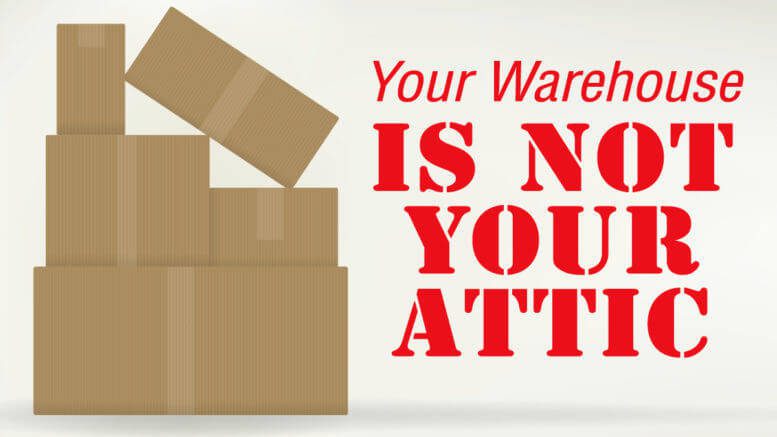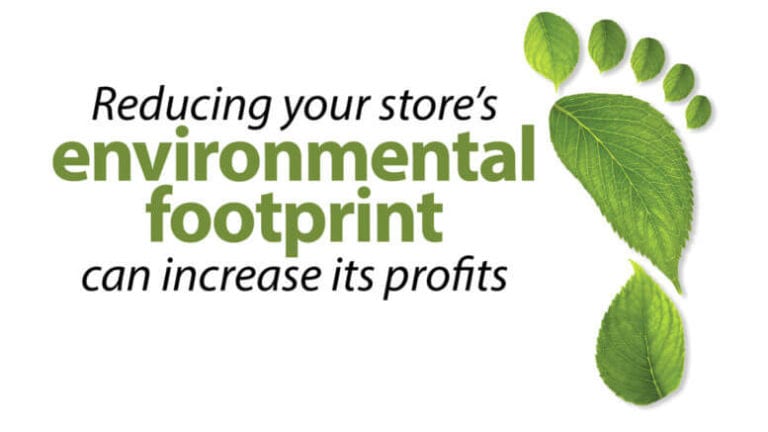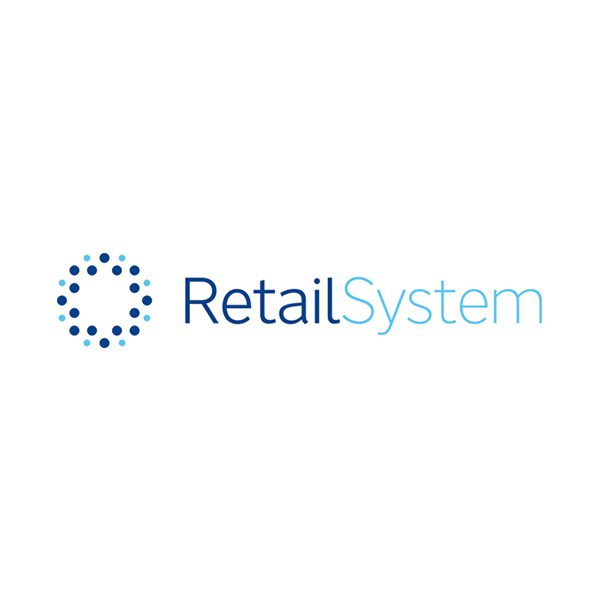It’s a temporary storage facility for your merchandise.
With the right space and procedures in place, your warehouse can add value to your furniture store.
When it comes to warehouses, I’ve seen them all. I’ve seen the pristine, state-of-the-art, purpose-built facilities. I’ve also seen the chopped-up back rooms that remind me of Frankenstein’s laboratory. Then there’s the expansive underground caverns packed with containers storing who knows what with creatures taking nest among the contents.
In the furniture industry, retailers put up with their existing warehouse until it bursts its seams. Only then – usually when their business is doing well – do they start to consider warehousing as a necessary part of doing business. Many furniture store owners believe that warehouses are a necessary evil, costly storage spaces that eat away at profits and cash flow.
That’s infuriating because the notion that a warehouse, or distribution center, simply costs a business couldn’t be further from the truth. When operated correctly, a warehouse is a place that merchandise passes through and value is added to products and services. A warehouse is not intended for storage. It is for temporary uses, primarily for fulfilling promises made by sales teams to customers. Without adequate warehousing, sales potential cannot be achieved.
Appropriate physical warehouse space and modern equipment add value, but focus must also be placed on warehouse processes and procedures. Inefficiencies, lack of coordination and poor training diminish value.
When it comes to warehouses, one size does not fit all. I’ve seen one-level underground warehouses with millions of square feet of controlled temperature, pristine, affordable space and effective docks. Depending on the situation, I might select this type of warehouse over a four-wall, costly, vertical, box-type facility.
Your warehouse needs to be effective and efficient. Efficient means doing things right in a streamlined fashion. Effectiveness means doing the right things at the right times. An operation might accurately receive merchandise but take five times longer to do it than necessary because of flawed processes. Conversely, an operation may be the fastest at onloading a container but not without frequent errors and damages.
Below are several ways warehouse operations either add or take away value.
Physical elements that add value
Ample space. There’s generous room and designated areas for receiving, advanced picking, inspection and preparation, plus merchandise outbound staging.
Racking. Facilities should be the maximum height allowed by local codes. Remember one of real estate’s oldest adages: Air is cheap, ground is pricey.
Layout. Design to minimize merchandise movement and time to pick.
Aisle structure. Incorporate a logical numbering sequence to minimize time for put-away and pick. Designated areas should be provided for the cross-docking of customer receiving, merchandise returns, new item store transfers and back-up stock according to best-seller ranking and turns.
Number of docks. The number of dedicated docks must be adequate for receiving freight, outgoing delivery trucks, customer pick-up and trash removal … all at dock height.
Trucks. Drivers must have the ability and be reliable enough to allow for an eight- to 10-hour workday per full truck.
Moving equipment. These include pickers and purpose-built rolling carts to move merchandise efficiently.
Physical elements that remove value
Ground-level doors. These reduce value by requiring the repeated lifting of merchandise, leading to damages and wasted time.
Lack of picking and prep space. This always creates a chaotic environment where the work flow is difficult to control.
Inadequate racks. These can lead to location errors, damages and increased labor time. Usually the cheapest space is up, and poor use of vertical space adds cost.
Containers or overflow storage facilities. A makeshift solution causes difficult-to-find products, time inefficiency, added rent cost and increased likelihood of theft and damages.
Value-added processes
The name of the game with process execution is to be in control of the work, as opposed to the work controlling the tasks being performed. Examples of standard processes to control work include:
Vendor scheduling. Incoming freight must be scheduled to save time and enable proper scheduling of human and equipment resources.
Pre-receiving. Bar code labels should be pre-printed and sorted. Expected merchandise should be categorized by type of stocking merchandise, customer cross-dock merchandise, and display goods. This enables a better plan for put-away.
Receiving. Label and scan as the merchandise is unloaded. Use packing slips if the label must be moved.
Put-away. Locate merchandise in the aisle that makes the most sense for faster future picking and minimal internal warehouse movement. Customer cross-docking sales can be located together so orders are already grouped and near the prep area. Fast-turning best-sellers that also sell together should be paired and positioned in easy-access aisle positions. Items that take longer to turn can be located higher and farther out in the warehouse. Showroom transfer can be in a designated area to speed the process of floor moves. All merchandise should be scanned with its exact location and with the label facing out.
Picking. Picking order should be initiated at a specific time and organized by aisle. Merchandise must be picked by location and scanned to delivery preparation areas. Either pick by order or batch-pick by line methods depending on which is quicker. Picking by order picks one sale at a time. Batch picking by line picks multiple sales at a time.
Delivery preparation. Once delivery receipts are generated, outgoing freight must be grouped by customer and stop, inspected and detailed where necessary. Merchandise should be held in a location corresponding to the outgoing truck number.
Loading. After the delivery manager signs off on merchandise being loaded onto trucks, delivery crews load their own trucks in reverse stop order, usually at the end of each day for the following day’s deliveries.
Delivery. Follow delivery routing as dictated by your GPS routing system. All merchandise must be placed and set up, trash removed, product pictures and surveys taken, and customers’ sign-off finalized. Any issues should be noted.
Pick-ups. These should be scheduled so that the warehouse can pull merchandise in time for the customer’s arrival and reduce daily interruptions.
Transfers. Times, days and cutoffs should be established for work scheduling.
Reverse logistics. Returns are placed in an inspection area within the DC for the service manager to inspect every day.
Cycle inventories. Cycle inventories should be done routinely during downtime and directed by the accounting department so they can be randomized. Exceptions representing process or scanning errors should be less than one percent.
Processes that take away value
Labels. Printing labels after merchandise arrives is a poor practice, causing merchandise to sit around on the receiving dock longer.
Scheduling. Allowing truckload freight to just show up sabotages resource planning and worker productivity. Any last-minute scheduling of deliveries, transfers and pickups after cutoff times has the same effect.
Scanning. Not scanning to a picking location causes cycle inventory discrepancies and increases the chance of a wrong item being picked. No matter what the size of a warehouse, not scanning to rack locations makes coordinated picking impossible.
Routing. Manual, non-GPS routing wastes gas, labor, time and slows turns.
Inventory. Lack of scanned cycle inventories causes problems to go unresolved as well as inventory imbalances.
Warehouse waste
The acronym TIM WOOD is commonly used to highlight waste areas. Here’s how that process might apply to the common types of retail distribution waste:
Transportation. The longer merchandise takes to arrive, the longer it spends in a warehouse, the greater the cost. Also, the more time warehouse employees spend moving around products, the more labor hours are added to the cost of product distribution.
Inventory. There are three types of products in a warehouse that are the least wasteful: customer inventory that is scheduled, best-seller backup inventory, and new floor merchandise that is scheduled for transfer. Other inventory, either unscheduled customer sales, overstock of non-best-sellers, inventory not displayed and damaged goods, are costly in terms of dollars invested, labor and space.
Motion. Employees doing the wrong work at the wrong time is wasteful. This often occurs when poor processes cause interruptions. For example, if an employee is busy picking product for deliveries, and is interrupted by a manager who asks him to receive unscheduled freight, both tasks are likely to be affected negatively.
Waiting. Idle time equals lost dollars. Good management of work-flow reduces idle time. It is better to work at a steady pace than to be rushed or sit around. Value-added daily tasks should be specified to fill downtime. These might be facility and equipment maintenance, customer follow-up calls, cleaning, cycle inventories and training.
Over-inventory. A warehouse is not like your attic. It’s not meant for long-term storage. It’s a pass-through facility that should add value, enable distribution and increase the ability to sell more. Carrying too much inventory causes cash-flow shortages and slower turns and decreases the ability to maximize sales volume.
Over-processing. Doing too much of a task or having too many resources assigned is wasteful. For instance, performing daily cycle inventories on the same aisles with consistent perfect results is overkill.
Defects and damages. Vendor defects and internal product damage costs time and money. It is important to track how often defects and damages occur, also where and why they occur. The first step to eliminate waste is to find, track and eliminate it.
Concepts to consider
Here are some suggestions for eliminating waste and adding value to warehousing, distribution and operations:
LEAN Operations: LEAN is the practice of continually looking for and reducing resources and activities that don’t add value. It can be applied to product, processes and people. By eliminating things that take away value, additional resources to propel the operation forward are added.
80/20 Rule: This rule states that, on average, a minority of inputs produce most outputs. Or, on average, 80 percent of results come from 20 percent of resources. For example, most sales come from a minority of items. Most problems are caused by a small number of items or people.
Kanban: This is a Japanese word for “signaling” work. It is the practice of controlling work-flow, instead of letting the work control you. Controlling chaos in a retail operation requires a specific “signal” to begin a job or function.
Kaizen: Also Japanese, Kaizen means change for the better. It is a practice of continually looking at business operations, finding challenges and opportunities, and executing actions to improve. The performance groups and consultations I enable are all based on the practice of Kaizen.
TOC: The Theory of Constraints, created by Eliyahu Goldratt, describes how work can only flow at the speed that the constraining element allows. This constraint may be an employee or process. Even an excellent worker can accept too much work and become unproductive. Or the constraint might be a weak process that causes things to grind to a standstill. TOC helps managers identify a constraint, solve problems and enable the smoother flow of value-added activities.
5S: This is another lean concept that has its roots in Japan. The 5 S’s are:
Sort – Review waste, messy areas and unproductive spots. Divide everything into three parts: keep, move or return, trash.
Set – Put everything in its proper place.
Shine – Make the area beautiful.
Standardize – Put processes in place to keep things organized and beautiful.
Sustain – Constantly review what is working and what is not. Commit to ongoing education and process improvement.










